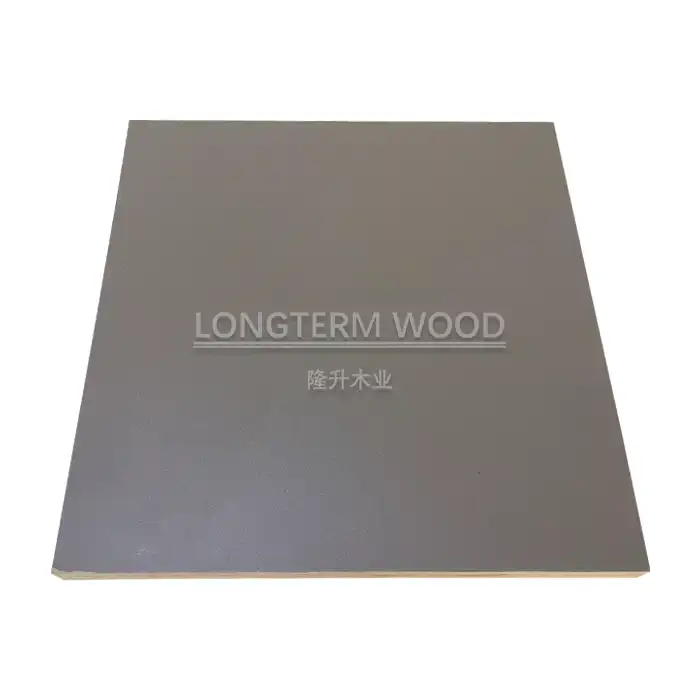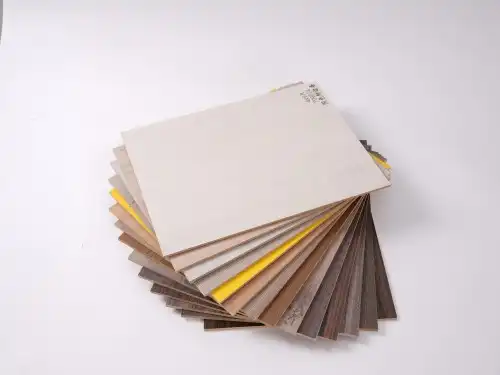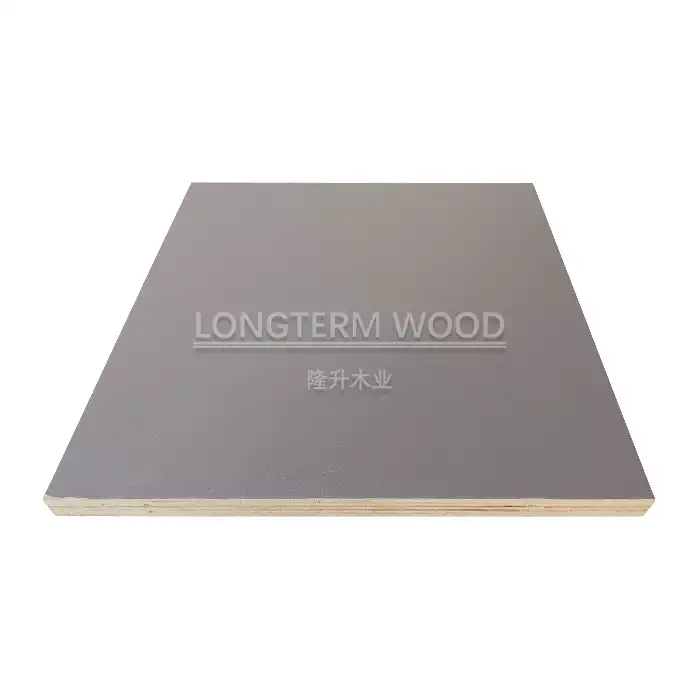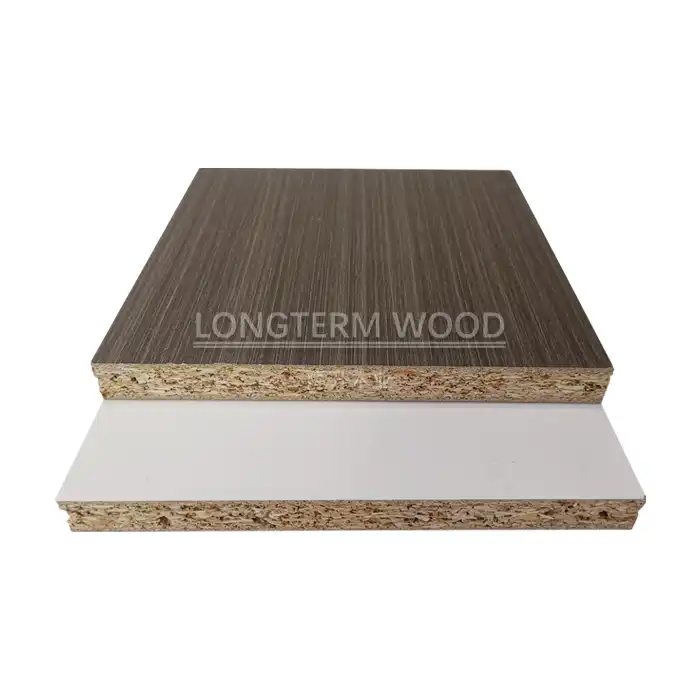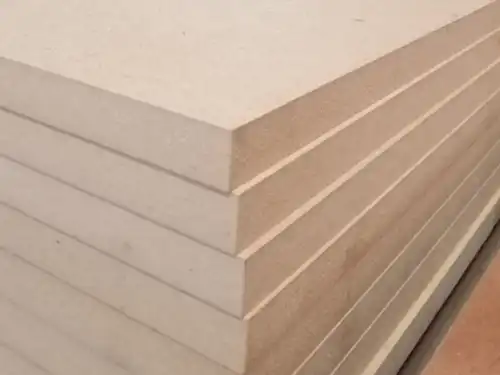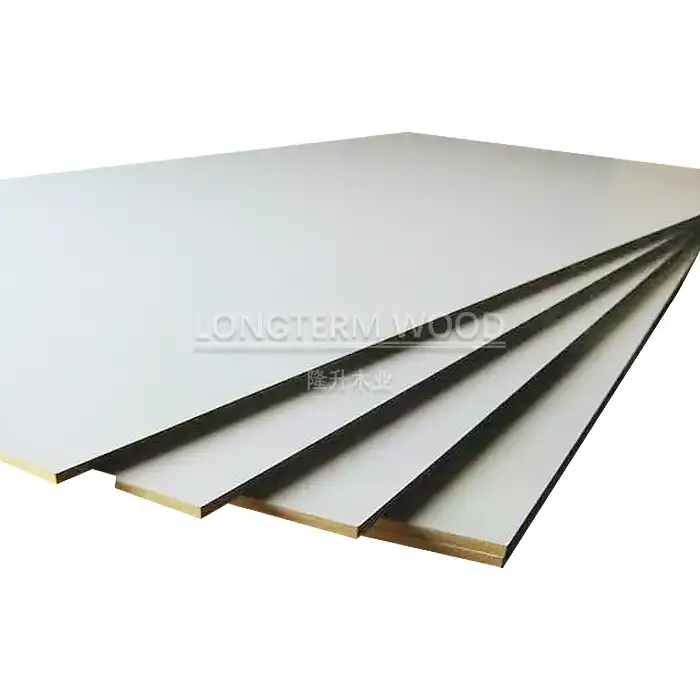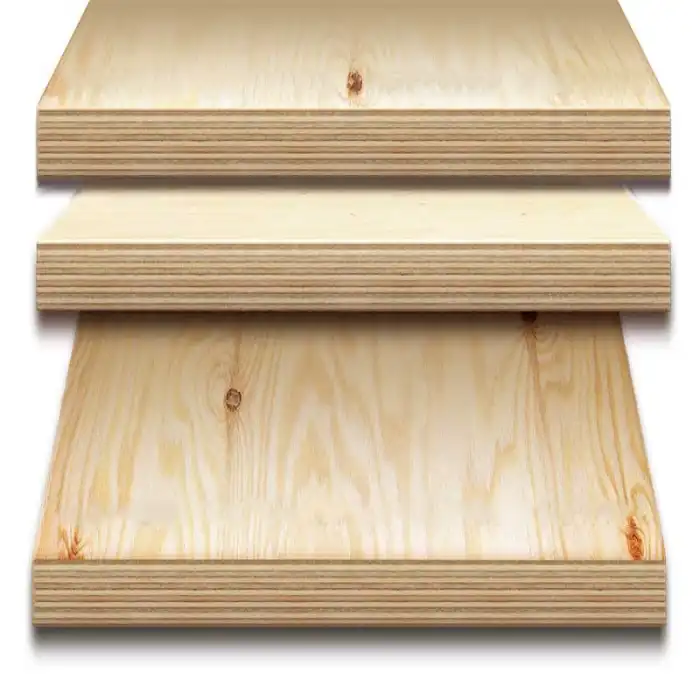
Why Use Melamine Plywood for Restaurant Furniture?
2025-05-07
When designing or renovating a restaurant, selecting the right materials for furniture is crucial to ensure durability, aesthetics, and cost-effectiveness. Melamine plywood has emerged as a preferred choice for restaurant owners and interior designers due to its exceptional performance in high-traffic hospitality environments. This specialized engineered wood product combines the structural integrity of plywood with the protective and decorative benefits of melamine resin surfacing, creating an ideal material for restaurant tables, chairs, booths, counters, and cabinetry. Its remarkable resistance to stains, scratches, and moisture, coupled with design versatility and competitive pricing, makes melamine plywood particularly well-suited for the demanding conditions of food service establishments.
Durability Features of Melamine Plywood in Restaurant Settings
Exceptional Resistance to Daily Wear and Tear
In the bustling environment of a restaurant, furniture faces constant use and abuse from customers moving in and out, spills, cleaning chemicals, and temperature variations. Melamine plywood stands out as an exceptional solution due to its remarkable durability characteristics. The melamine resin coating creates a hardened protective layer that effectively resists scratches, stains, and abrasions that would quickly damage other materials. Unlike raw wood surfaces that easily show wear patterns, melamine plywood maintains its appearance even after years of heavy use. The thermosetting process used in manufacturing melamine plywood creates chemical bonds that are nearly impossible to break under normal restaurant conditions. This inherent toughness translates to furniture that remains attractive longer, reducing replacement frequency and associated costs. Restaurant owners particularly appreciate how melamine plywood surfaces can withstand the rigorous daily cleaning routines necessary in food service environments without deteriorating, unlike some natural wood products that may warp or degrade with repeated exposure to cleaning agents.
Superior Moisture and Heat Resistance
Restaurant environments present unique challenges with constant exposure to liquids, varying humidity levels, and occasional heat exposure. Melamine plywood excels in these conditions with its exceptional moisture resistance properties. The melamine resin coating acts as an effective barrier, preventing moisture penetration that would typically cause swelling, warping, or delamination in conventional wood products. This water-resistant quality makes melamine plywood ideal for table surfaces where drinks are frequently served and occasionally spilled. Beyond moisture protection, quality melamine plywood also offers impressive heat resistance, withstanding brief exposure to hot plates or serving dishes without developing scorch marks or surface damage. This dual protection against both moisture and heat ensures furniture maintains structural integrity and appearance despite the challenging restaurant environment. The sealed surface of melamine plywood also prevents bacterial growth in the porous structure that might occur with natural woods, offering an additional hygienic advantage essential for food service settings.
Long-Term Performance and Low Maintenance Requirements
Investing in restaurant furniture represents a significant capital expenditure that owners expect to last for years. Melamine plywood delivers exceptional value through its extended lifespan and minimal maintenance requirements. Unlike solid wood that requires regular refinishing, or laminates that may peel at the edges, properly manufactured melamine plywood maintains its attractive appearance with simple cleaning routines. The melamine surface doesn't require waxing, polishing, or reconditioning treatments, saving significant maintenance costs over the furniture's lifetime. Restaurant staff can quickly clean melamine plywood surfaces with standard cleaning products without fear of damaging the material. This low-maintenance quality translates directly to operational efficiency, as staff can focus on customer service rather than complex furniture care procedures. Furthermore, quality melamine plywood from reputable manufacturers like Linyi Longterm Wood Industry maintains color stability even under exposure to artificial lighting or filtered sunlight, preventing the fading or discoloration that affects many other furniture materials. This color retention ensures the restaurant's aesthetic appeal remains consistent throughout the years.
Aesthetic Versatility for Restaurant Design Concepts
Extensive Range of Colors and Finishes
Restaurant design requires materials that can express the establishment's unique brand identity and atmosphere. Melamine plywood excels in this area with its remarkable diversity of colors, patterns, and finishes. Unlike traditional wood limited to natural tones, melamine plywood comes in virtually limitless color options, from crisp whites and deep blacks to vibrant accent colors that can complement any design scheme. Designers can select from glossy surfaces that reflect light and create a modern, upscale ambiance, or matte finishes that provide a more subdued, elegant appearance. Texture options extend from ultra-smooth to textured surfaces that mimic natural materials—wood grain patterns that deliver the classic aesthetic of mahogany, oak, or walnut without the maintenance concerns of actual hardwoods. Specialized melamine plywood products even offer unique finishes like concrete, marble, or metallic effects that would be prohibitively expensive in their natural forms. This extensive aesthetic range allows restaurant owners to achieve their design vision without compromising on the practical durability that melamine plywood offers. With advanced printing technologies, manufacturers like Linyi Longterm Wood Industry can produce customized melamine plywood with proprietary patterns or even brand elements, creating truly unique restaurant furniture.
Design Consistency Across Multiple Restaurant Elements
Creating a cohesive restaurant interior requires consistent materials across various furniture elements and architectural features. Melamine plywood provides exceptional design continuity opportunities, allowing designers to use visually matching materials for tables, chairs, booths, service stations, reception desks, wall panels, and cabinetry. This consistent application creates a unified aesthetic throughout the space without the natural variations that make matching difficult with solid woods. The manufacturing process for melamine plywood ensures reliable color and pattern consistency across production batches, essential when furnishing larger restaurants or restaurant chains requiring multiple orders over time. For restaurant groups maintaining several locations, melamine plywood offers the ability to maintain brand consistency while potentially customizing accent colors or finishes to suit local market preferences or building architecture. The ability to create harmonized design packages using melamine plywood simplifies the specification process for designers and architects, streamlining project coordination and implementation. Additionally, when replacement or expansion becomes necessary, melamine plywood makes it easier to source materials that seamlessly match existing furnishings, maintaining the restaurant's integrated design scheme without obvious visual disruptions.
Customization Capabilities for Brand Expression
Modern restaurants increasingly view their interior design as an extension of their brand identity and marketing strategy. Melamine plywood supports this approach through extensive customization possibilities that allow restaurant owners to create signature looks. Beyond standard color options, manufacturers like Linyi Longterm Wood Industry can produce melamine plywood incorporating custom graphics, patterns, or textural elements that align perfectly with brand guidelines. For restaurant chains, this means furniture elements can subtly reinforce brand recognition while still allowing for regional design variations. The versatility of melamine plywood extends to edge treatments—from exposed plywood edges for an industrial modern look to fully sealed edges for a more refined appearance. Restaurant designers appreciate how melamine plywood can be easily machined, routed, and shaped to create distinctive furniture forms and architectural elements that differentiate the establishment from competitors. Even lighting integration becomes seamless with melamine plywood, as the material can be precisely cut to accommodate embedded lighting features that enhance the dining experience. This extraordinary adaptability makes melamine plywood an ideal canvas for restaurants seeking to create memorable, Instagram-worthy spaces that encourage social media sharing and repeat visits from customers who appreciate thoughtful design.
Practical Benefits for Restaurant Operations and Management
Cost-Effectiveness Throughout the Product Lifecycle
Restaurant profitability demands careful management of both upfront capital expenses and ongoing operational costs. Melamine plywood delivers exceptional value throughout its entire lifecycle, beginning with acquisition costs significantly lower than solid hardwoods or premium materials like marble or metal. Despite its affordability, melamine plywood provides comparable or superior performance characteristics for restaurant applications. The manufacturing process for melamine plywood is highly efficient, consuming fewer resources than solid wood production while delivering consistent quality. Restaurants operating on tight construction or renovation budgets can achieve high-end aesthetics using melamine plywood without compromising their financial discipline. Beyond the initial purchase, the durability of melamine plywood extends its service life well beyond many alternatives, spreading the investment cost over more years of operation. The low maintenance requirements translate directly to reduced labor costs and cleaning supply expenses over time. When furniture damage does occur, melamine plywood components can often be repaired or replaced individually rather than requiring complete furniture replacement. For franchise operations or restaurant groups, the consistent availability of melamine plywood allows for standardized specifications across multiple locations, creating purchasing efficiencies and simplified inventory management for spare parts or replacement elements.
Health and Safety Advantages in Food Service Environments
Restaurant operators must prioritize customer and staff safety while complying with increasingly stringent health regulations. Melamine plywood contributes positively to these efforts through several inherent characteristics. The non-porous surface of quality melamine plywood prevents the absorption of liquids, food particles, or bacteria that might harbor in more porous materials. This smooth, sealed surface facilitates thorough sanitization procedures critical in preventing foodborne illness transmission through contaminated furniture surfaces. Leading manufacturers like Linyi Longterm Wood Industry produce melamine plywood adhering to strict E1 and E0 formaldehyde emission standards, ensuring indoor air quality remains safe for both customers and staff working long shifts. The fire-resistant properties of properly manufactured melamine plywood contribute to overall restaurant safety, as the material doesn't readily ignite and produces fewer toxic emissions compared to some alternative materials if exposed to fire. Restaurant owners appreciate how melamine plywood resists chemical damage from cleaning agents necessary for maintaining sanitary conditions, unlike some materials that degrade with repeated exposure. Additionally, quality melamine plywood maintains structural integrity under varying temperature and humidity conditions typical in restaurant environments, preventing warping or splitting that could create physical hazards or uncomfortable seating for guests.
Installation Efficiency and Future Adaptability
Restaurant construction and renovation timelines significantly impact revenue potential, making materials that facilitate efficient installation extremely valuable. Melamine plywood offers considerable advantages in this regard, requiring fewer specialized tools or techniques compared to natural stone or metal alternatives. The consistent dimensional stability of melamine plywood minimizes on-site adjustments, accelerating construction schedules and reducing labor costs. The material's relatively lightweight nature compared to solid wood or stone simplifies handling during installation while reducing structural support requirements. Professional fabricators appreciate melamine plywood's compatibility with standard woodworking equipment, allowing precision cutting, drilling, and edge finishing without specialized machinery. Beyond initial installation, melamine plywood's adaptability proves valuable as restaurant concepts evolve over time. The material can be easily modified, refinished, or repurposed as design trends change or operational needs shift. Restaurant owners contemplating future expansions benefit from melamine plywood's consistent availability, ensuring aesthetic continuity across phased projects. For seasonal restaurants or those requiring reconfigurable spaces, furniture constructed with melamine plywood offers the durability to withstand frequent rearrangement without degradation. This material flexibility provides restaurant owners valuable agility in responding to market trends or changing customer preferences without complete furniture replacement costs.
Conclusion
Melamine plywood stands as the ideal solution for restaurant furniture, offering unparalleled durability, design versatility, and operational benefits. Its resistance to daily wear, moisture, and stains ensures long-lasting performance in demanding food service environments. With customizable aesthetics and cost-efficiency throughout its lifecycle, this material delivers exceptional value for restaurant owners seeking quality without compromise.
At Linyi Longterm Wood Industry Co., Ltd., we bring over 20 years of expertise in manufacturing premium melamine plywood specifically engineered for commercial applications. Ready to transform your restaurant with furniture that combines style and substance? Our team provides personalized consultation to match your specific design requirements and budget considerations. Contact us today at howie@longtermwood.com to discuss your project needs and discover why leading restaurateurs trust our melamine plywood solutions!
References
1. Johnson, M. (2023). Modern Materials in Restaurant Design: A Comprehensive Analysis. Journal of Hospitality Design, 45(2), 112-128.
2. Williams, S. & Thompson, R. (2024). Sustainable Material Selection for Commercial Food Service Environments. International Journal of Restaurant Management, 31(1), 75-89.
3. Chen, H., & Li, Q. (2022). Comparative Analysis of Engineered Wood Products in High-Traffic Commercial Applications. Wood Science and Technology, 56(3), 901-918.
4. Robertson, A. (2023). Economic Impact of Material Selection on Restaurant Renovation ROI. Cornell Hospitality Quarterly, 64(4), 350-367.
5. Garcia, L., & Martinez, P. (2024). Hygiene and Safety Considerations for Restaurant Furniture Materials. Journal of Food Service Research, 29(2), 215-232.
6. Taylor, D. (2023). Aesthetics and Durability: Balancing Design and Function in Restaurant Interiors. International Journal of Hospitality Design, 18(3), 189-204.
YOU MAY LIKE
-
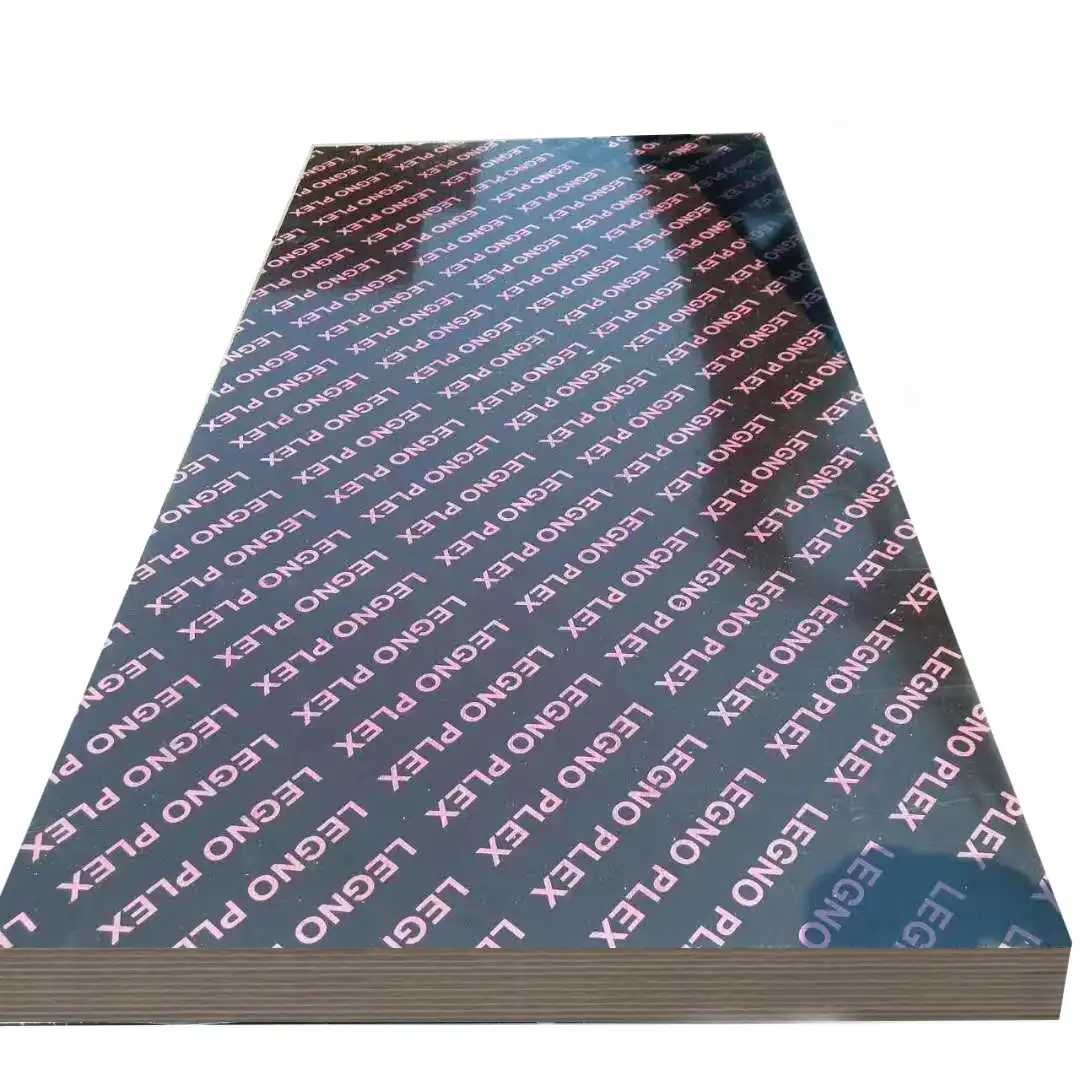
Manufacturer Direct Sale Price 18mm Marine Plywood 16mm 12mm Film Faced Plywood for Construction
SHOW MORE







